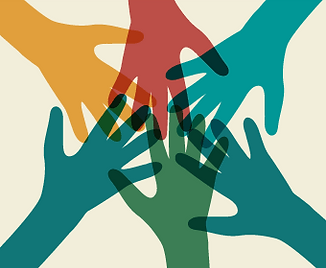

Multi-cultural teams


The reality of the globalisation process for business has long been acknowledged. Similarly, cultural diversity is true. More and more frequently, people from different cultures interact with one another not only internationally but also domestically and locally.
Similarly, Indian organizations are attracting and retaining the best talent working in multicultural teams. The majority of Indian businesses now work in multicultural teams due to the changing nature of the business environment and the growing number of Indian organisations around the world.
According to Cox (1993), cultural diversity" is the representation, in one social system, of people with clearly different group affiliations of cultural significance. In complex organisations, the traditional method for managing multiculturalism has been to expect members of the minority culture to adapt to the cultural norms of the dominant group.
There are ideas like Sarva Dharma Sambhava, Unity in Diversity, and Vasudhaiva Kutumbakam among the Indian cultural aspects. These components can be found anywhere in multiculturalism's guiding principles. The Indian Constitution adheres to multiculturalism by including clauses that safeguard minorities and forbid discrimination on the basis of race, religion, or caste.
The Indian government has recognised 21 more languages in addition to Hindi, which is the country's official language (Gupta et al., 2021). To enable effective communication, team members must be aware of the preferred languages and levels of expertise of their colleagues.
India's heterogeneous teams are characterised by varying communication techniques. Individuals from individualistic cultures may favour direct communication, whereas those from collectivist cultures may place more emphasis on indirect communication (Gupta et al., 2021). Team members should be aware of these disparities and modify their communication techniques as a result.

Being a foreign employee of an Indian company may be both tough and rewarding. India has a distinctive corporate culture, according to Gupta and Krishnan (2020), which is strongly impacted by traditional values including hierarchy, deference to authority, and the significance of connections.
Building trust and rapport with co-workers helps promote a productive and collaborative work environment because relationships are highly valued in Indian culture (Gupta & Krishnan, 2020). This can be participating in extracurricular activities or spending time outside of work hours getting to know co-workers personally.
According to Osland et al. (2006), a multicultural team with individuals who have cultural affinities with stakeholders and consumers can foster a sense of trust and camaraderie that can boost client loyalty and satisfaction. Multicultural teams can also assist businesses in better comprehending and adjusting to the cultural subtleties of their target markets, which is important in the current globalised economy.
"Diversity offers both a great opportunity for the companies as well as major challenges" (Adler, 2002).

Challenges in Multi-cultural work environment
According to Taylor Cox (1991), corporate executives face challenges as a result of increased diversity because they must take advantage of the potential it offers while minimising its costs. To do this, organisations must change from monolithic or pluralistic models to multicultural ones.
Communication is one of the biggest issues that multicultural teams must deal with. Ineffective communication can result in misconceptions and decreased productivity due to language difficulties and communication style variations (Maznevski and DiStefano, 2000). Since there are so many different languages and dialects spoken in India, this is especially difficult.
The problem of cultural disparities is one further difficulty multicultural teams encounter. India is a multicultural nation with a rich cultural heritage, and many cultural perspectives on communication, decision-making, and dispute resolution may exist. As a result of these disparities, the team may experience friction and miscommunication, which can hinder productivity and collaboration (Gelfand & Jackson, 2006).
Multiculturalism in India puts the interests of particular groups above those of the entire country, undermining the general welfare in favor of a minority interest. It causes tensions to develop between those from various racial and ethnic backgrounds. Radical movements could result from multiculturalism in Indian organizations.
A danger to multiculturalism arises when a group begins to think narrowly, believing that they are superior to others, and they demonstrate prejudice and hostility against other groups.